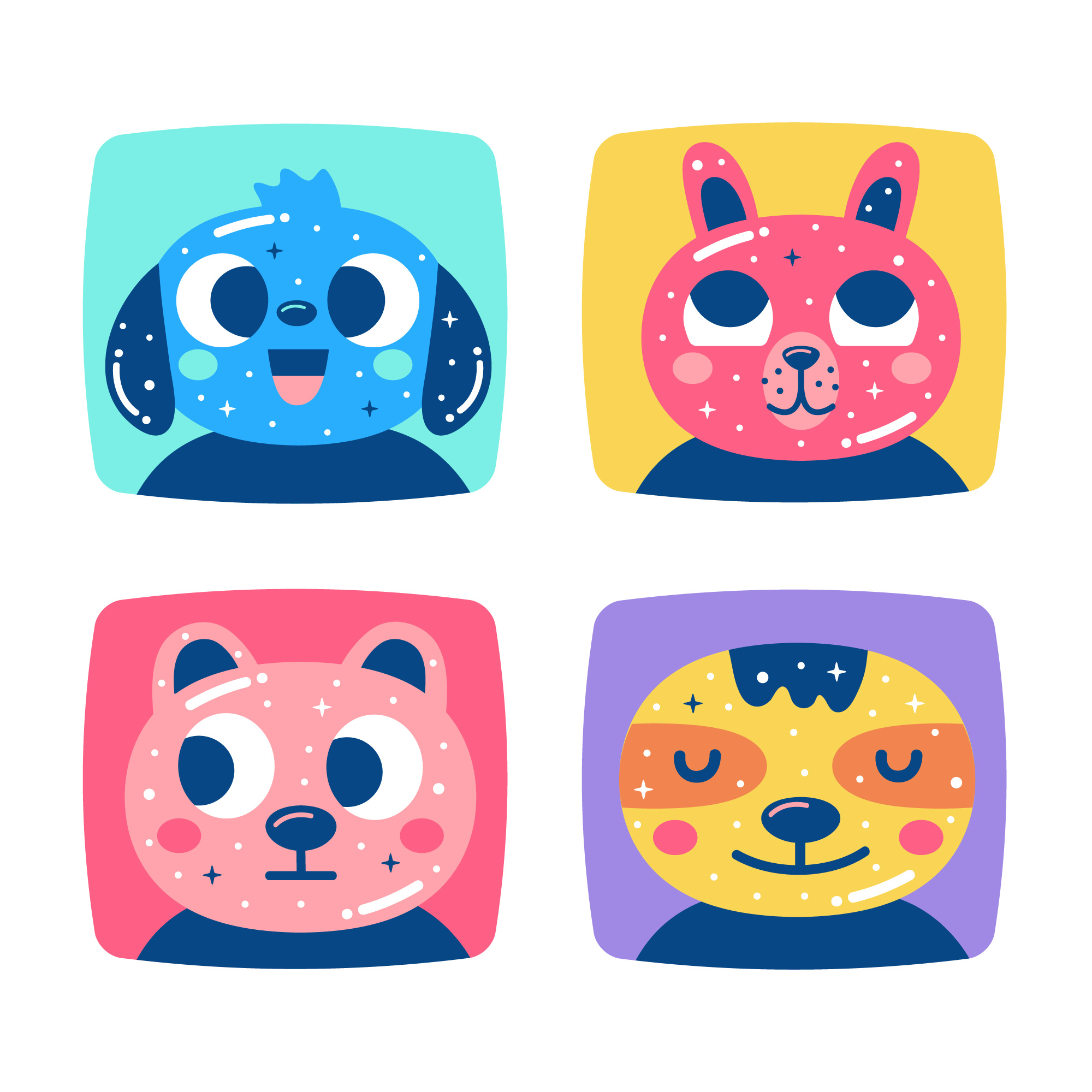
Designing a Chatbot: From Simple Interfaces to Engaging Avatars
Von Sara Ladner am 07.06.2024
The world of chatbots has evolved significantly, from simple text-based interfaces to interactive assistants with personality. This evolution is not only fascinating but also sets high standards for the user experience. Customers today expect seamless interactions with chatbots, and a well-designed user interface (UI) is key to meeting these expectations.
Getting started with chatbot UI design can be challenging, but it is crucial for ensuring user satisfaction and retention. This article will cover the definition, role, and expectations of chatbot UIs.
What is a Chatbot User Interface?
A chatbot user interface (UI) consists of graphical and language elements that facilitate human-computer interaction. Unlike traditional interfaces such as buttons or menus, chatbots often use natural language processing (NLP) to understand and respond to user input in text or voice form.
Types of Chatbots
There are two main types of chatbots: rule-based and AI-driven. Rule-based chatbots work with predefined scripts and respond to specific keywords or commands. In contrast, AI chatbots use advanced technologies like machine learning and natural language processing to conduct complex conversations and adapt to user input over time.
Choosing Between Rule-Based and AI Chatbots
Chatbots have become an integral part of modern business processes, offering efficient customer service and automation solutions. When deciding between AI-driven and rule-based chatbots, it’s important to consider the strengths and weaknesses of each option.
Rule-Based Chatbots
Advantages:
- Cost-Effective: Budget-friendly and quick to implement.
- Ease of Implementation: Simple setup without extensive training.
- Time Savings: Automate routine tasks and inquiries.
Disadvantages:
- Lack of Personalization: Limited ability to adapt to user preferences.
- Limited Use Cases: Constrained by predefined scripts.
- Poor Fit for Complex Issues: Not suitable for larger businesses with sophisticated support needs.
AI-Driven Chatbots
Advantages:
- Intelligence and Adaptability: Understand user intent and handle complex inquiries.
- Enhanced User Experience: Provide natural, conversational interactions.
- Advanced Data Protection: Operate securely on internal servers.
Disadvantages:
- Longer Setup Time: Requires extensive training and coordination.
- User Hesitation: Some users may be reluctant to interact with AI systems.
- Resource Intensive: Initial investment in training and implementation.
The choice between AI-driven and rule-based chatbots depends on various factors, including the size of the business and the customer base. It’s important to choose the right option to improve customer service and streamline business operations.

The Benefits of an Engaging Chatbot Avatar
In the digital age, the desire to express one’s personality is stronger than ever. Online, an avatar reflects individual interests, views, and principles. With chatbot avatars, efficiency is improved, the user experience is enhanced, and branding is effectively represented.
Chatbot Avatars – What Are the Options?
Avatars come in all shapes and sizes. Traditionally, avatars are known from video games, where they represent the player’s virtual likeness. Players have complete freedom to design their avatar to resemble themselves or adopt an entirely different appearance.
In the realm of chatbots, the possibilities for creating an avatar are nearly limitless. However, there are some common types to consider, including:
- The company’s logo
- An image of a person
- A cartoon or illustration
- A geometric shape
- A video recording
- An animation
- Just text
These avatars are generally classified as:
- Human
- Non-human
- Abstract

When designing a chatbot avatar, there are numerous possibilities. Here is an overview of static avatar types for chatbots. The right type of avatar for a chatbot depends on the bot’s personality and the company’s values.
Strengthening the Chatbot’s Personality with an Avatar
A well-designed avatar enhances the chatbot’s persona, reflecting the brand’s identity in every aspect. This involves fundamental decisions like how the chatbot addresses users and crafting humorous responses. An avatar visually represents this persona, making interactions feel more personal and human, thereby increasing engagement. Users feel they have a direct contact, giving them the sense of undivided attention from the chatbot.
Immersive Storytelling Through Avatars
Storytelling is a crucial marketing tool to promote a brand or product innovatively. It allows the branding to have an engaging identity and tell an authentic, creative, and inspiring story to the target audience. A chatbot avatar helps users immerse themselves in the world created by the brand, playing various roles in the company’s narrative.
Teamwork – Reaching Goals Together with the User
The goal of most chatbots is to guide customers to a specific objective, such as answering a service question or finding a new apartment. It’s essential that users feel the chatbot is collaborating with them to reach the desired goal, not hindering or sabotaging them.
Avatars play a significant role here, taking users by the hand and staying with them until the goal is achieved. This can be particularly helpful for tasks that users regularly complete via the chatbot. The avatar becomes a familiar face, associated with the task, whose assistance is appreciated after multiple successful interactions.
At a Glance: What to Consider When Developing an Avatar
An avatar that aligns with the developed persona and the company’s branding is a valuable addition to any chatbot. It makes the dialogue with the user feel more personal, guides them effectively, and quickly becomes a trusted advisor. An avatar allows users to immerse themselves in the brand’s world and helps tell immersive stories. It perfectly embodies the brand’s identity and becomes a standout representative in the digital space.
Best Practices for Implementing a Chatbot User Interface
Implementing an effective chatbot UI requires careful planning and consideration. Here are some best practices to keep in mind:
- Choose the right chatbot platform that meets the requirements and technical expertise.
- Define the chatbot’s personality and tone to create a consistent brand experience.
- Write dialogues that mimic natural conversations and evoke positive emotions in users.
- Design a conversational flow that guides users through interactions and efficiently resolves their queries.
- Integrate visual elements such as images and GIFs to enhance the chatbot experience and convey information effectively.
- Educate users on bot commands and functionalities to streamline interactions and improve user satisfaction.
- Strike a balance between proactive and reactive engagement to offer timely assistance without overwhelming users.
- Enable seamless escalation to human support when needed by facilitating smooth transitions from bot to agent interactions.
Conclusion
Chatbots are a powerful tool to improve customer interactions and increase the efficiency of business processes. By following best practices in designing and implementing chatbot user interfaces and selecting the right chatbot solution for your needs, the full potential of this technology can be realized.
Literature
[1] 5 Examples of Fantastic Chatbot UI Link
[2] All You Need to Know to Use Chatbots in Business. Complete Guide 2024 Link
[3] Warum Ihr Chatbot unbedingt einen Avatar haben sollte Link
[4] Rule-Based vs. AI Chatbots: Key Differences Link
[5] What if you endowed your chatbot with an avatar? Link
[6] AI Chatbot vs Rule-based Chatbot: Which is the Smarter Choice for Your Business? Link
Images
[A] Difference between Rule-based and AI Chatbot Image
[B] Example of possible cartoon and non-human avatars Image by freepik

The comments are closed.